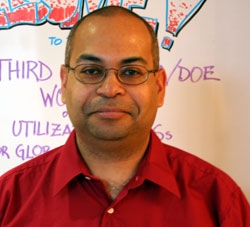 |
| Photo courtesy of UAS NOAA |
Growing up in coastal Louisiana made Anthony Guillory all too weather-aware. With thunderstorms a regular phenomenon and hurricanes a potential hazard lurking around the corner each year, Guillory became engrossed by weather. This climaxed in 1978 when tropical storm Deborah created a tornado near his home. It was at this point, in the aftermath of Deborah, that Guillory’s career choice was finalized. Guillory was 12 and knew right then and there that he wanted to be a meteorologist and study hurricanes.
Guillory spent middle school and high school pouring over science books of all kinds. He was enthralled by it all, be it chemistry, biology, physics, or meteorology. By high school he was so enraptured in his love for science that he built a weather station in his own back yard and collected data from it each day.
Today he tells students that the most important thing for them to do is to ‘absorb everything’ when it comes to science, which is basically, the rule of thumb he followed in his youth.
It was obviously no surprise, then, when Guillory pursued a collegiate degree in Atmospheric Sciences at Northeast Louisiana University (now the University of Louisiana at Monroe) and graduated with honors, and later a Master of Science degree in Meteorology at Florida State University
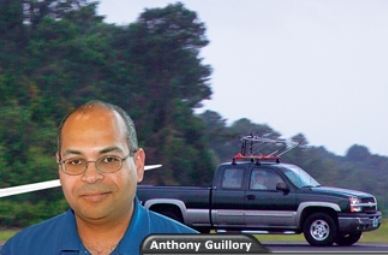 |
| Guillory shown with an aerosonde loaded on top of a truck. Photo courtesy of The JASON Project |
As would be expected, his life’s dream was to work for NASA, and shortly after graduating, that’s where he went. He was stationed at NASA’s Marshall Space Flight Center where he worked with scientist Robbie Hood. studying rainfall in hurricanes. Working there for 14 years, he and his crew rode planes into hurricanes to collect their important data, and studied numerous thunderstorms.
He was promoted to NASA’s main headquarters and today is stationed at Goddard Space Flight Center Wallops Flight Facility on Wallops Island, Virginia, where he serves as an Airborne Science Project Manager. There, he oversees a whole fleet of NASA research aircraft! One of his most unique aircrafts is the Uninhabited Aerial Vehicle Aerosonde.
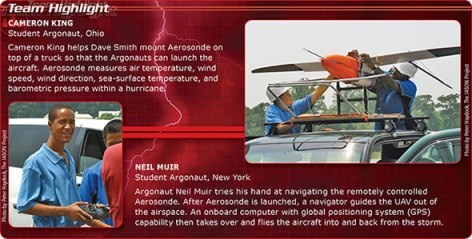 |
| Argonauts Cameron King and Dave Smith mount the Aerosonde on top of a truck so they can launch the aircraft. Aerosondes measure air temperature, wind direction, wind speed,sea-surface temperature, and barometric pressure. (photo credit: JASON project) |
Guillory most recently worked with the JASON Project as a lead scientist (as did scientist Robbie Hood, with whom he worked with in the past). The JASON project pairs student ‘Argonauts’ with leading scientists on scientific journeys to study specific topics. Guillory worked on the ‘Monster Storms’ expedition, where he and his crew of student Argonauts launched their own weather-data-collecting Aerosonde.
Always eager to spread the word about science, Guillory has also penned over 25 articles and presentations on his work.
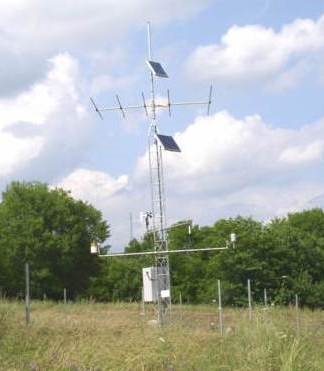 |
| This is an example of a weather station in Alabama, at Allen Farms Photo courtesy of the USDA National Resources Conservation Service. |
He is so passionate about meteorology, in fact, that he invested hundreds of off-hours and his own money to create a network of weather stations throughout northern Alabama and the surrounding region.
Alone, he and his partner, Paul Meyer, surveyed and selected the site locations, and then assembled and installed the eight weather stations, themselves, with three additional weather stations to follow. The goal was to ensure better weather forecasting for the area through surface observation thus enabling scientists to gather even more meteorological data.
To ensure even greater public weather forecasting, Guillory and Meyer, also passionate about amateur radio, helped create a strong bond between fellow ham radio operators in the Tennessee Valley, and the National Weather Service.
As a result they were awarded with NOAA’s (National Oceanic and Atmospheric Administration) 2003 Environmental Hero Award. Awarded on Earth Day, the award honors individuals and organizations that volunteer themselves through “tireless efforts to preserve and protect our nation’s environment.”
NOAA’s National Weather Service is the main source of weather forecasts, warnings, and data in the U.S. and U.S. territories, operating what is considered to be the most advanced forecasting and weather and flood warning system in the world.
Those honored with the prestigious Environmental Hero award are considered vital to NOAA’s mission of helping to save lives and protect property through weather forecasting and warning systems. In turn, a greater understanding of weather patterns also helps protect coastal and marine resources.
Anthony Guillory's passion for weather science exudes in everything he does. It began when he was child and has continued to grow throughout his life, with no sign of slowing. Some people are seemingly destined for a specific career path -- some even make it their life's mission to pursue a field that will benefit humanity. Anthony Guillory is clearly one of these heroes.
Page created on 8/16/2014 3:06:07 PM
Last edited 8/16/2014 3:06:07 PM
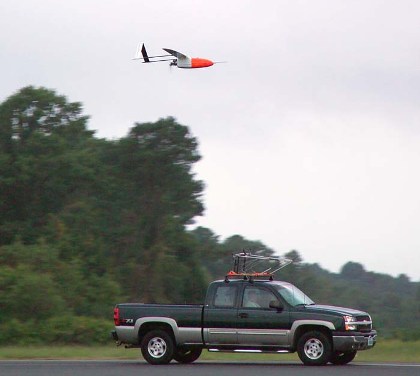
"The Aerosonde is being deployed to fill chronic gaps in the global upper-air sounding network, to conduct systematic surveillance of tropical cyclones and other severe weather, to undertake offshore surveillance and agricultural/biological surveys, and to obtain specialist observations, such as volcanic plumes."
Aerosonde quote by: Dr. Greg Holland, CEO, Aerosonde Pty Ltd.
